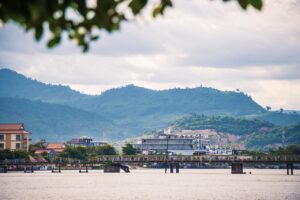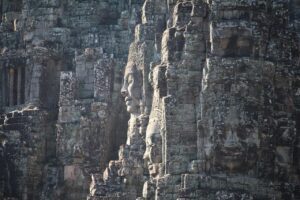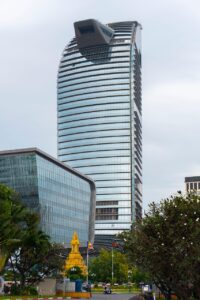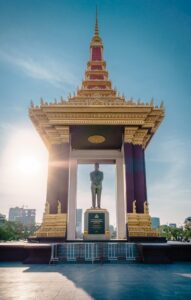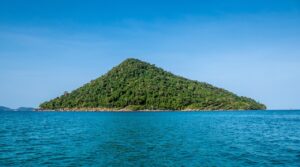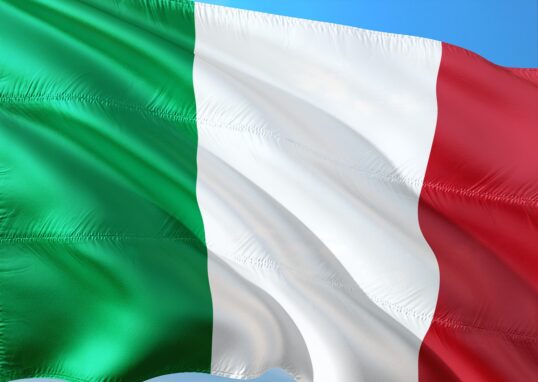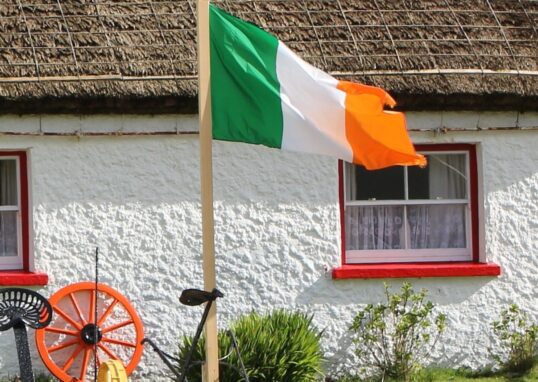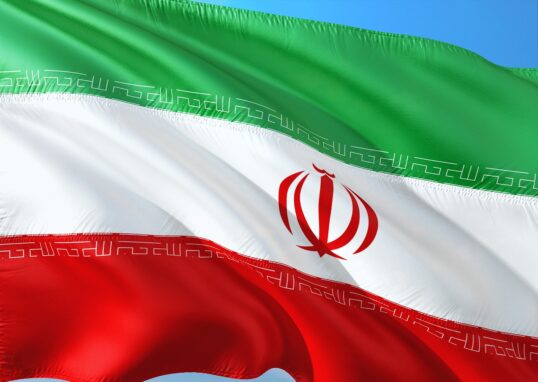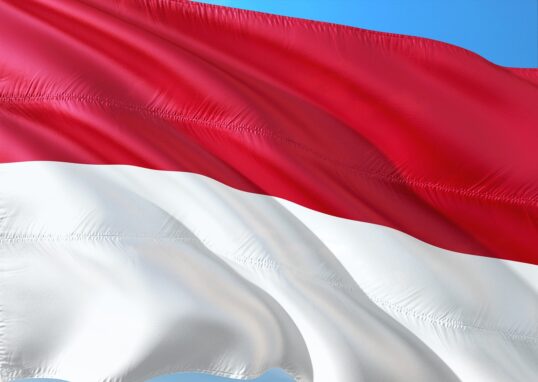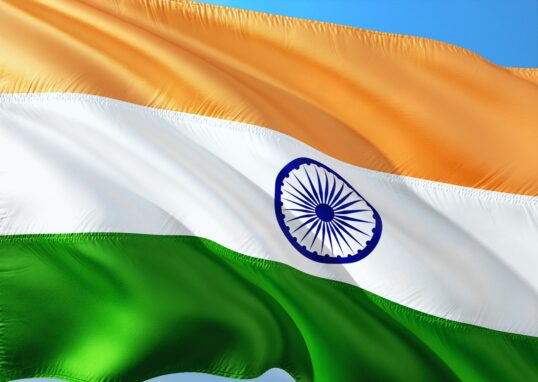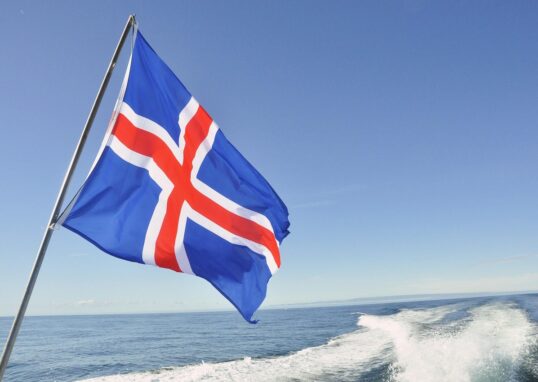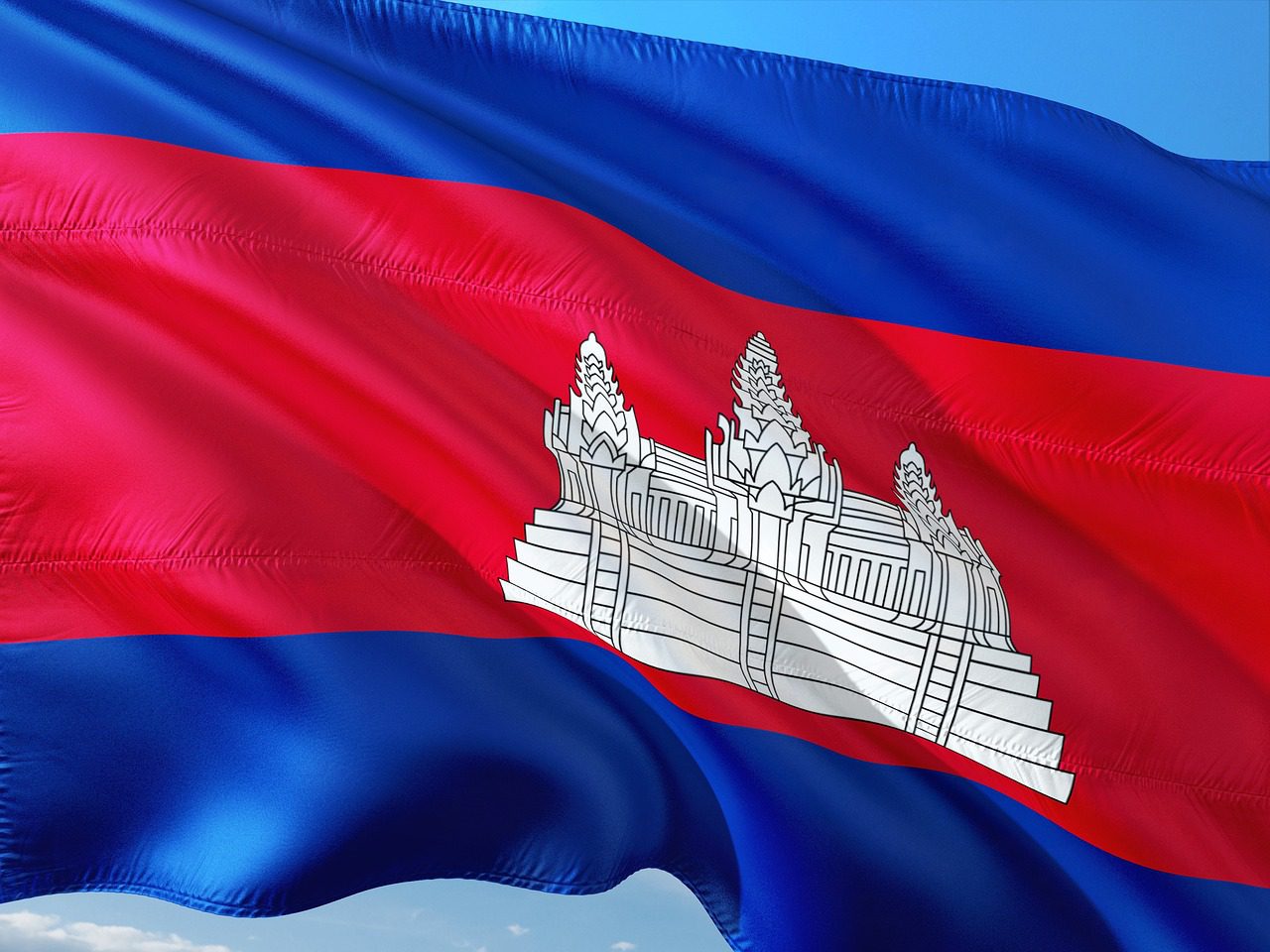
Cambodia: The Land of Ancient Wonders and Timeless Beauty
Cambodia, or the Kingdom of Cambodia, is a beautiful country in Southeast Asia. It borders Thailand to the northwest and west, Laos to the north, Vietnam to the east, and the Gulf of Thailand to the southwest. Cambodian culture, history, and natural beauty are in abundance all over the country. Its temples, scenery, and welcoming residents make this country one of Asia’s most fascinating destinations. Cambodia is roughly 181,000 square kilometers in size and has a population of nearly 17 million people. Phnom Penh is both the capital city and the largest city, and it is also the hub of the country’s economy. The official language is Khmer, and the official currency is Cambodian Riel (KHR). It is a tropical country with two seasons: the wet (May to October) and the dry (November to April). Its warm and humid climate accommodates rich forest, fertile plains, and scenic river systems. The Mekong River, which is one of Asia’s great rivers, runs through the country, sustaining agriculture, fisheries, and transportation. Cambodians are renowned for their hospitality and austere religious beliefs, closely associated with Buddhism. 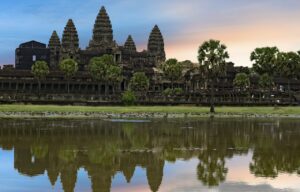
Historical Background
The Cambodian history is glorious as well as tragic. It was a cradle of the great Khmer Empire, which was among the most advanced Southeast Asian civilizations. The Khmer Empire existed from the 9th to the 15th century and built the majestic city of Angkor, whose ruins are still a UNESCO World Heritage Site to this day. The empire was based at Angkor Wat, the largest religious monument in the world. The old capital city of Angkor Thom and its temples, including Bayon and Ta Prohm, reflect Cambodia’s heyday. But following the collapse of the Khmer Empire, Cambodia then suffered for centuries at the hands of foreign rulers. It was a French colony in the 19th century and became independent in 1953. The country then endured under the Khmer Rouge rule (1975–1979), one of its darkest periods. Millions died during the war, famine, and atrocities. Cambodia recuperated, though, with an incredible degree of strength. Today, it stands as a testament to peace and rebirth.
Culture and Religion
Culture in Cambodia is deeply rooted in Theravada Buddhism, which is practiced by about 95% of the country’s population. Monks, pagodas, and Buddhist festivals are a part of everyday life. People often visit temples to pray, present offerings to monks, and celebrate religious events like Pchum Ben and Khmer New Year. The Khmer people also preserve their heritage in music, dance, and crafts abundant. The Apsara dance, drawing inspiration from celestial dancers in ancient temple carvings, is Cambodia’s most beautiful art form. Silk weaving, silvercraft, and stone carving are a few of the traditional arts that follow the artistic heritage of the country. Cambodian cuisine is rich but simple and consists of amok trey (fish curry), lok lak (beef stir-fry), and nom banh chok (rice noodle soup), all of which are favorites among the locals. Family, community, and respect for elders are Cambodian values.
Economy and Development
Cambodia’s economy is growing exponentially, depending on tourism, agriculture, textiles, and property. The nation’s fertile soil is cultivated with rice, cassava, corn, and rubber. Tourism drives Cambodia’s economy. There are millions of tourists coming to the country each year to tour Angkor temples, visit Phnom Penh, and relax on southern beaches. Foreign investment and urbanization in recent years have remade cities, but there is still traditional rural life.
Top Tourist Attractions in Cambodia
Cambodia is a land of charm, mystery, and ancient wonder. It combines history and nature and colorful culture. Cambodia has temples of Angkor, peaceful beaches, and floating villages. Cambodia has a secret or magic for each visitor. Cambodia has its top tourist spots that make it unforgettable.
Angkor Wat – The Symbol of Cambodia
Angkor Wat is Cambodia’s most famous landmark and the world’s best example of architecture. It is located near Siem Reap city and was built in the 12th century by King Suryavarman II. It was originally a Hindu temple dedicated to the god Vishnu, though later it was converted into a Buddhist temple. Its temple grounds are huge and beautifully designed. It comprises five spire-topped towers reaching the heavens above the earth. The walls feature beautifully crafted carvings of ancient wars, gods, and Hindu legends. The most ideal time to visit Angkor Wat is in the morning. The towers in the water and the golden hue of dawn are a dream come true. Angkor Wat also features on Cambodia’s flag, suggesting just how important it is to the country’s heritage.
Angkor Thom and Bayon Temple
Only a brief distance from Angkor Wat is Angkor Thom, the ancient royal city of the Khmer Empire. King Jayavarman VII built it in the later half of the 12th century and was the capital for quite a few centuries. It has a size of about 9 square kilometers and is surrounded by big stone walls and gates with carvings depicting demons and gods. At the center of Angkor Thom lies Bayon Temple, Cambodia’s most mysterious building. The temple is famous for its 216 smiling stone faces in all directions. The faces are believed to be either that of the king himself or the face of bodhisattva Avalokiteshvara, which symbolizes compassion. The bayon walls are decorated with sculptures of daily life, war, and spiritual themes. Going to Angkor Thom is stepping back into history to visit an ancient age of glory.
Ta Prohm – The Jungle Temple
Ta Prohm is one of Cambodia’s best photographed temples. It is also known colloquially as the “Tomb Raider Temple” since it has been featured in the hit movie Lara Croft: Tomb Raider. The temple is unique compared to the others since it has been considerably left intact in the same condition that it was discovered. Massive banyan and silk-cotton tree roots sprawl across the stone walls, blurring nature and history. Roots coil in windows, towers, and corridors, full of mystery and awe.
Phnom Penh – The Capital City
Its capital city Phnom Penh lies where the Mekong, Tonle Sap, and Bassac Rivers meet. It is the political, economic, and cultural hub of Cambodia. It is as modern as it is with its old colonial structures, pagodas, and lively street life.
Top attractions in Phnom Penh include:
- The Royal Palace and Silver Pagoda: Official residence of the King of Cambodia. The Silver Pagoda is named due to the 5,000 silver tiles that make up the floor of the pagoda. Inside the pagoda, gold and crystal Buddha images are found.
- The National Museum of Cambodia: It houses thousands of items from the Angkor period, which give an insight into the art and history of Cambodia.
- Tuol Sleng Genocide Museum and Killing Fields of Choeung Ek: These museums recount the tragic history of Cambodia under the rule of the Khmer Rouge. They are sites for remembrance and education.
The riverfront area in Phnom Penh is another popular feature, where one gets to taste local cuisine, shop at markets, and view lovely sunsets.
Sihanoukville and the Islands
For people who love the sea, Sihanoukville is where to go in Cambodia. It’s a coastal resort town on the Gulf of Thailand and offers soft white beaches and clear blue water. Its best-loved beaches are Otres Beach, Serendipity Beach, and Sokha Beach. They are perfect for swimming, sunbathing, and water sports. Off the coast lie the charming islands of Koh Rong and Koh Rong Samloem. White sandy beaches, blue waters, and a relaxed atmosphere attract visitors. There’s snorkeling, diving, kayaking, or a relaxed day by the sea. The islands also boast eco-resorts and bungalows for those who want to stay close to nature.
Kampot and Kep – Peaceful Riverside Towns
Kampot is a charming town located near the southern coast. Kampot peppers, river views, and colonial structures are the town’s features. The famous Kampot Pepper is one of the world’s best peppers and is utilized by the world’s top chefs. Near Kep is a sea town famous for fresh seafood, especially crab dishes served with Kampot pepper sauce. Visitors can enjoy a pleasant day at Kep Beach or take a short boat trip to Rabbit Island (Koh Tonsay), which has peaceful beaches. Close to Kampot is Bokor National Park, a cool hill country with waterfalls, wildlife, and the remains of a French colonial hill station. The park affords beautiful views of sea and countryside.
Battambang – The Cultural Heart of Cambodia
The second-largest city in Cambodia and one of the most creative is Battambang. It is a laid-back ambiance, with graceful French colonial buildings, art galleries, and riverfront cafés. One of the most fascinating experiences to be found here is the Bamboo Train (Norry). It is a small bamboo platform along abandoned railway tracks and offers a pleasant, scenic journey over rice fields. Other local attractions include Phnom Sampeau, a hill on which temples and caves exist, and Ek Phnom, an ancient Angkorian temple. Battambang is also a suitable location to explore the region’s crafts, music, and traditional dance.
Tonle Sap Lake – The Floating Villages
Tonle Sap Lake is Southeast Asia’s largest body of fresh water. It changes dramatically with the seasons—expanding during the wet season and shrinking during the dry season. Millions of humans inhabit floating villages on the lake and subsist on fishing. Boat tours are offered for tourists to see the floating markets, schools, and homes. It’s a wonderful insight into local life and how people live in harmony with the rhythm of the water. The lake is a UNESCO Biosphere Reserve, rich with wildlife and birdlife.
Siem Reap – The Gateway to Angkor
Siem Reap is the tourists’ hub for visiting the Angkor temples. It’s not only a sightseeing base, though. The city is bustling and full of character. There are vibrant markets such as the Old Market (Psar Chas), art galleries, and cultural performances. Pub Street is the place to eat and be entertained, and there’s Phare, the Cambodian Circus, with its incredible blend of acrobatics, dance, and storytelling. Siem Reap also has upscale hotels, boutique resorts, and low-cost guesthouses for all tourists.
Ratanakiri and Mondulkiri – Adventure in the Highlands
Travellers who are adventurous and love nature would love the provinces of Ratanakiri and Mondulkiri in the northeast. The provinces are packed with forests, waterfalls, and hills that are occupied by some of the indigenous tribes. In Ratanakiri, you can visit the Yeak Laom Volcanic Lake, with its blue water and peaceful backdrop. In Mondulkiri, this Elephant Valley Project allows tourists to observe and be part of the care for rescued elephants in their natural habitat. These two regions offer trekking, ecotourism, and a chance to discover the unfettered Cambodia.
Nature and Wildlife
Cambodia’s natural environment is diverse. From waterfalls and mountains to tropical islands, the terrain is full of scenery. The Cardamom Mountains in the southwest are home to lush rainforests and wildlife such as elephants, tigers, and gibbons. Preah Monivong National Park (Bokor National Park) offers cool weather, forests, and scenery. The Virachey National Park in the north east is an enormous expanse of jungle and rivers and is the destination for adventure enthusiasts. Tourists in the southern islands such as Koh Rong have snorkeling, coral reefs, and peaceful beaches to enjoy. Cambodia is even making an effort to conserve its wildlife and forests through protection programs.
People and Lifestyle
Cambodians are warm, hospitable, and hardworking. Most live in the rural areas and depend on agriculture. Wooden houses, rice fields, and family celebrations are daily sights. Urban life is more modern in cities like Phnom Penh and Siem Reap. Cafes, bazaars, and schools indicate a thriving economy. The fascination with old traditions still persists, though. Street vendors sell fresh fruits, colorful clothing, and handmade products. The biggest national holiday is the Khmer New Year, celebrated in April. People celebrate by partying, playing games, and conducting water festivals.
Education and Society
The education system of Cambodia has improved in recent decades. The NGOs and the government are working to provide better schools and training schemes. Local as well as foreign students receive admission to the Royal University of Phnom Penh, in addition to other Phnom Penh universities. Education and respect are valued in society. English and Chinese are among the foreign languages many young Cambodians are studying to access good jobs.
Transportation and Connectivity
It is easier to move around Cambodia than ever before. International airports are in Phnom Penh, Siem Reap, and Sihanoukville. The roads have improved with the connection of major cities and tourist attractions. Taxis, buses, and tuk-tuks are the most used transport mediums. Boat cruises on the Tonle Sap Lake and Mekong River give beautiful tours.
Tourism in Cambodia
Tourism is an important sector of Cambodia’s economy. Cambodia receives millions of tourists annually. The Angkor Archaeological Park is the key tourist attraction, but tourists also prefer to see local culture, beaches, and countryside. The government encourages eco-tourism, where the tourists have access to nature responsibly. The tourists can visit wildlife sanctuaries, visit traditional villages, or go for river cruises. The tourism industry is also growing, with plenty of choices of hotels, resorts, and guesthouses in different prices.
Surrounding Places Near Cambodia
Cambodia’s convenient location in the heart of the country makes it easy to travel to other countries nearby. Thailand, renowned for beaches and capital cities like Bangkok, lies to the west. Vietnam, renowned for cities like Ho Chi Minh City and Mekong Delta, lies to the east. Laos, to the north, offers serene landscapes and ancient temples within Luang Prabang. Travelers can easily cross borders and undertake multi-country trips across Indochina.
Conclusion
Cambodia is a land of beauty, strength, and history. With the magnificent temples of Angkor, the serene villages along the Mekong River, and endless discoveries, it has something for everyone. Its people and traditions make it even more unique. Whether wandering ancient ruins, swimming in the sea, or discovering its rich culture, Cambodia touches every visitor’s heart. It is not just a country of the past—it is a country of hope, spirit, and timeless wonder.

